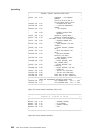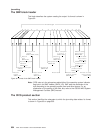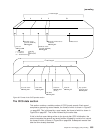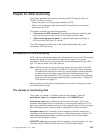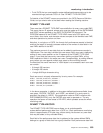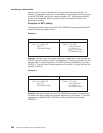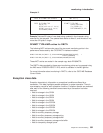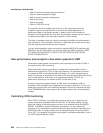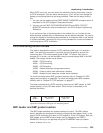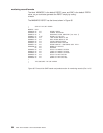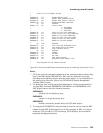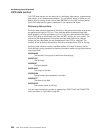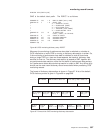
also has its own numeric identifier that is unique within the group identifier. For
example, the transaction sequence number field in a performance record belongs to
the group DFHTASK, and has the numeric identifier ‘031’. Using these identifiers,
you can exclude specific fields or groups of fields, and reduce the size of the
performance records.
Examples of MCT coding
The examples below show some EXEC CICS MONITOR commands with the MCT
entries that must be coded for them.
Example 1:
Example 1 shows a user clock being started by an application that is identified as
PROG3. This is the eleventh EMP in this application. To prevent confusion with the
eleventh EMP in another application, this EMP is uniquely identified by the empid
PROG3.11. The clock that is being started is the first clock in a string, and has the
identifier CLOCKA.
Example 2:
Example 2 shows the same user clock (CLOCKA) being stopped. Although this is
the same clock being stopped by the same application as in example 1, it is being
stopped from a different EMP. The EMP is uniquely identified by the empid
PROG3.12.
EXEC CICS MONITOR command MCT entry
EXEC CICS MONITOR DFHMCT TYPE=EMP, *
POINT(11) CLASS=PERFORM, *
ENTRYNAME(PROG3) ID=(PROG3.11), *
CLOCK=(1,CLOCKA), *
PERFORM=SCLOCK(1)
EXEC CICS MONITOR command MCT entry
EXEC CICS MONITOR DFHMCT TYPE=EMP, *
POINT(12) CLASS=PERFORM, *
ENTRYNAME(PROG3) ID=(PROG3.12), *
PERFORM=PCLOCK(1)
monitoring—introduction
660
CICS TS for OS/390: CICS Customization Guide



